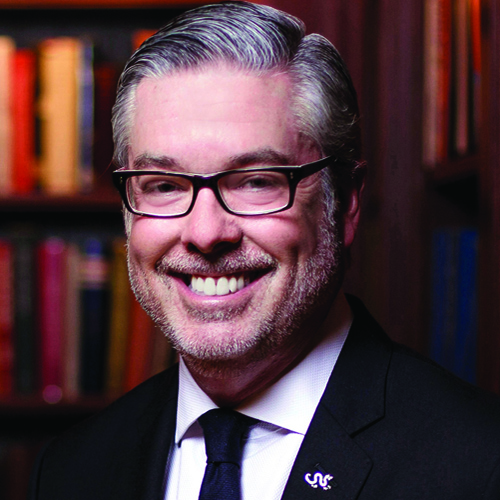By John Fry
For the past seven years, I’ve worked at a university that is about as far removed as possible from an ivory-tower institution.
Drexel University was founded 125 years ago within a short walk of one of the nation’s great rail hubs, now housed in Amtrak’s 30th Street Station in Philadelphia. We are at the confluence of major highways, and the bustle of urban life is all around us. That was intentional: Wall Street pioneer Anthony J. Drexel wanted his institution of higher learning to be deeply connected to the rapidly industrializing U.S. economy, and to educate young people to become its leaders.
That heritage still drives who we are at Drexel today: pioneers of experiential learning, innovative and entrepreneurial. And our heritage also buttresses my belief that, as an anchor institution, we cannot achieve true academic excellence without engaging with our city and working to meet its many challenges.
That is why I accepted the opportunity last fall to become chairman of the Chamber of Commerce for Greater Philadelphia—the first time in its 210-year history that this group has been led by a nonprofit executive. While many of my colleagues at urban colleges and universities will find it unusual that I took on a high-profile business-community assignment, I would make the case that more of us should be doing just that.
Academic leaders should understand that universities hold the future to many regional economies, and that their leadership makes sense, because, in essence, these anchor institutions are the economy—fueling growth through commercialization and entrepreneurship, providing a talented workforce for the businesses that thrive there.
Looking around their own campuses, my colleagues also see some of the same promise and peril. From anywhere on Drexel’s campus, for instance, you are only blocks away from neighborhoods where two jobs may not be enough to make ends meet and the poverty rate approaches 40 percent.
Nearby, there is another world: the rich environment of the University City district, with universities, hospitals, research centers and entrepreneurs. There are 76,000 jobs in this center of activity, but most go to people who live somewhere else. That these two worlds exist blocks apart illustrates the enormous contradictions we live with. It’s why some have likened Philadelphia to “A Tale of Two Cities.”
By the very nature of where Drexel’s campus sits—and where our students live—we must help tackle these problems. All the more so, because we are devoted to preparing a workforce for the new innovation economy.
At Drexel, we engage first at the neighborhood and campus level through a series of resources and initiatives that connect students and faculty to our neighbors. The Dornsife Center for Neighborhood Partnerships, for example, named for philanthropists Dana and David Dornsife, serves as an urban extension center where neighbors, Drexel students and faculty gather to work together. We offer a wide range of educational and enrichment programs for children, and a full suite of offerings for adults to better to their lives, including a program that provides college courses and high school degree completion.
Our campus is included in a federally designated Promise Zone, which brings the university together with the city and nonprofit partners in this community for shared strategies and program development. Our partnership was recently awarded a $30 million Promise Neighborhoods grant to transform education across seven public schools and on behalf of all the families who live in this community.
Yet, because Philadelphia’s poverty rate of 26 percent pegs it as the poorest big city in the nation, we have to work on a grander scale. This is where the Chamber of Commerce comes in, and in my inaugural remarks as chairman in October, I issued a call to action.
As I told 1,400 business leaders over breakfast at the city’s Convention Center, Philadelphia faces a crisis of opportunity rather than one of survival. We have become complacent, due to good progress over the last two decades. We have great assets—a healthy eds-and-meds sector, a major pharmaceutical and financial services presence, a growing high-tech community and burgeoning start-ups. But it isn’t enough.
That is because the metro areas of the world are in a race to the top, and the winning cities will be those that leverage the power of new, emerging technologies to drive economic growth and social progress, and make themselves hubs of innovation, centers for investment and magnets for talent. Others will be left behind.
Working in collaboration with the Brookings Institution, our anchor partners, and the Chamber, we hope to develop a better formula for Philadelphia’s success. When this strategy comes together in the coming months and begins to show results, it will be a case of doing well by doing good.
An improving city will help every institution of higher education. For Drexel, in particular, there’s the potential positive impact on our development of the Schuylkill Yards innovation district plans, the continued health of our cooperative education partnerships—now strong at 1,700 workplaces—and future job prospects for Drexel graduates. But I contend that, for the sake of our shared future, we have no alternative but to do what is morally right, and smart, to improve the lives of all Philadelphians.
If you have any questions or comments about this blog post, please contact us.


